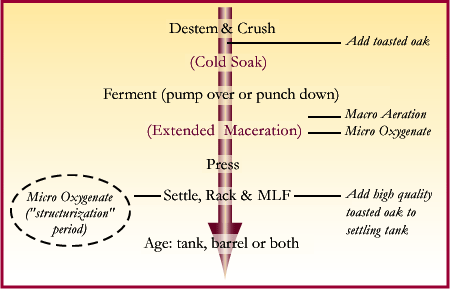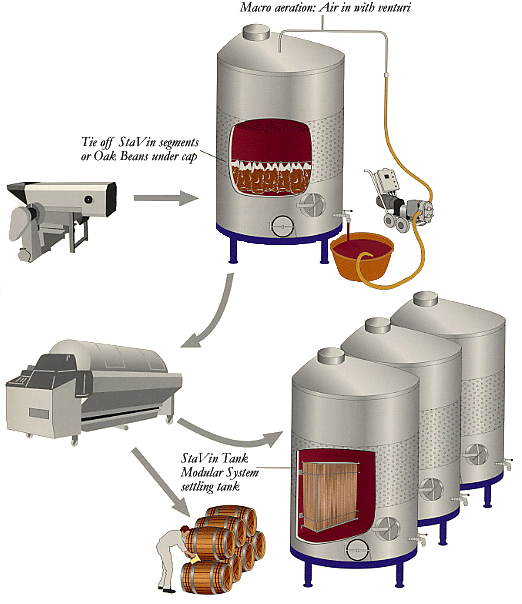The
process flow below is recommended to maximize color and middle body in red
wine. The first step is the addition of toasted oak in the fermentor to provide
the compounds which can aid in co-pigmentation. Additionally, toasted oak
provides compounds to initiate the stabilization, through crosslinking, of
procyanidin or prodelphinidin oligomers and polymers and
anthocyanins.
Aeration (macro aeration) can aid fermentation in
three ways: first, by providing oxygen as a nutrient which aids in cell
membrane integrity; second, by creating semi-oxidative conditions to minimize
the yeast's production of H2S; third, by producing small
amounts of acetaldehyde which also assist in initiating stabilization of color
and tannins.
Pressing off onto toasted oak will provide even
more compounds to enhance the stabilization of color and
tannins.

After
primary fermentation is completed and the wine is racked clean, micro
oxygenation can begin. This stage, noted above with a dashed oval, is what the
French refer to as structurization. However, few California wineries are
able to complete the structurization process before MLF occurs. We recommend
the typical winery process, allowing MLF to finish, with StaVin Oak Integration
Systems in the tank.
The
combination of toasted oak implemented in the fermentor, macro aeration during
fermentation, and pressing onto toasted oak, provides much of the same effect
as would the structurization process. This technique integrates harmoniously
with the way winemakers currently produce their wine, rather than imposing an
expensive change on their accustomed methods.

|







